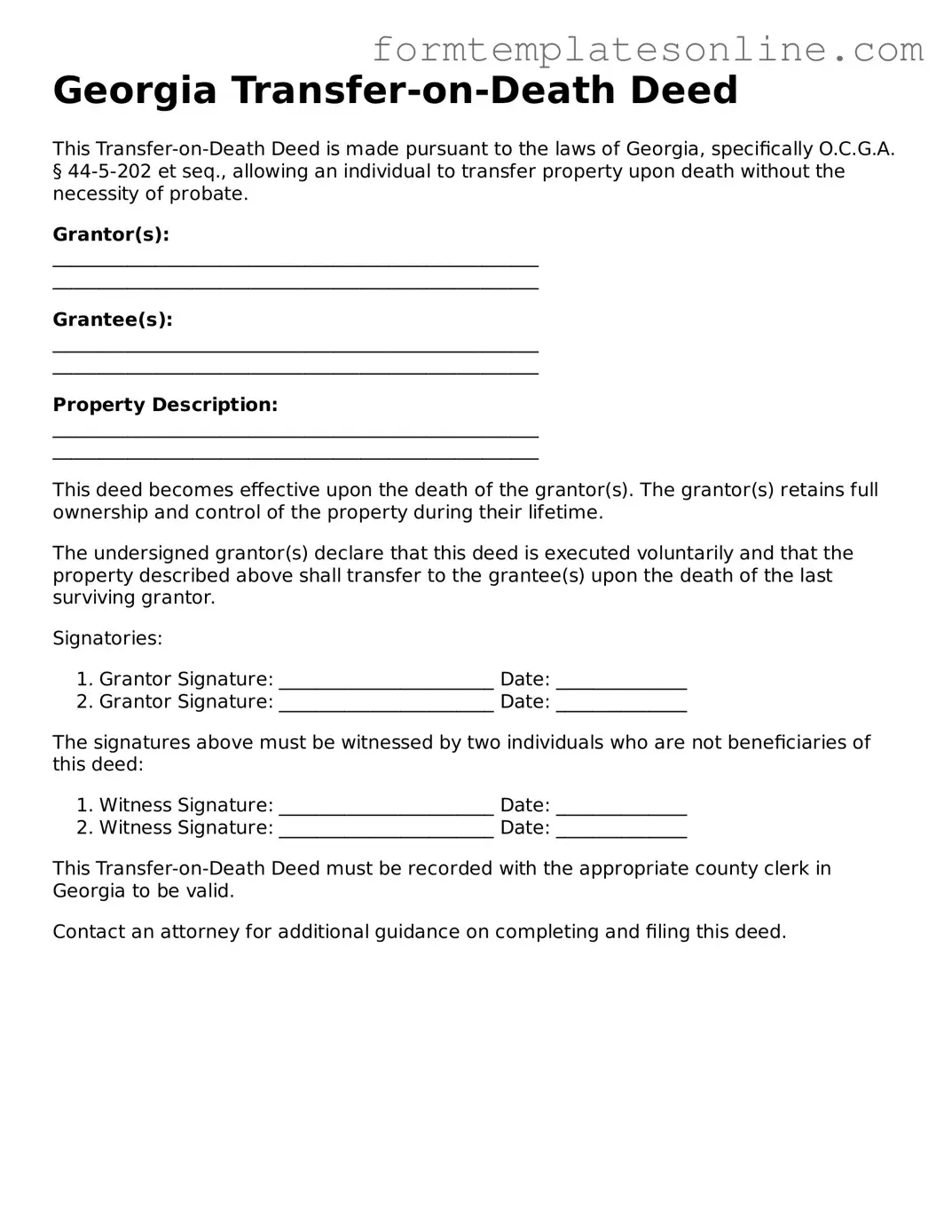Georgia Transfer-on-Death Deed
This Transfer-on-Death Deed is made pursuant to the laws of Georgia, specifically O.C.G.A. § 44-5-202 et seq., allowing an individual to transfer property upon death without the necessity of probate.
Grantor(s):
____________________________________________________
____________________________________________________
Grantee(s):
____________________________________________________
____________________________________________________
Property Description:
____________________________________________________
____________________________________________________
This deed becomes effective upon the death of the grantor(s). The grantor(s) retains full ownership and control of the property during their lifetime.
The undersigned grantor(s) declare that this deed is executed voluntarily and that the property described above shall transfer to the grantee(s) upon the death of the last surviving grantor.
Signatories:
- Grantor Signature: _______________________ Date: ______________
- Grantor Signature: _______________________ Date: ______________
The signatures above must be witnessed by two individuals who are not beneficiaries of this deed:
- Witness Signature: _______________________ Date: ______________
- Witness Signature: _______________________ Date: ______________
This Transfer-on-Death Deed must be recorded with the appropriate county clerk in Georgia to be valid.
Contact an attorney for additional guidance on completing and filing this deed.
